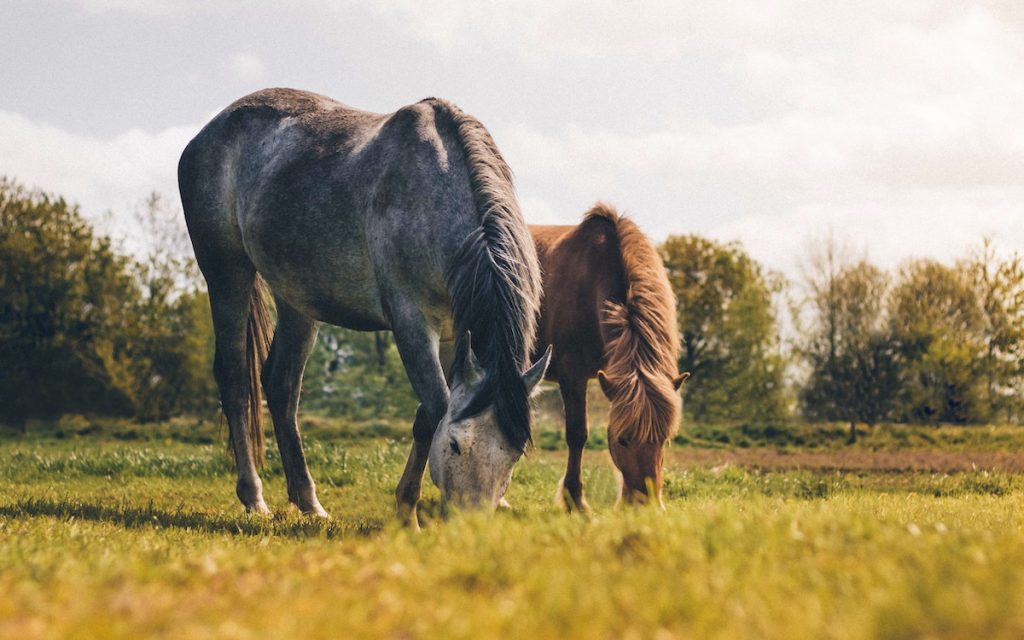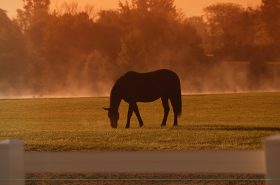Do you hear that? It’s the sound of every horse person rejoicing due to daylight savings time and the arrival of warmer weather. Spring is underway, and with it greener grass, flowers, and so many lovely things.
However, spring also harbors danger for some of our horses in the form of quick-growing green grass. If your horse is insulin resistant, has Pituitary Pars Intermedia Disorder (PPID), has ever suffered from a bout of laminitis, or has simply been off grass all winter long, he or she is at risk for developing laminitis or colic from fresh spring pasture. Put simply, spring grasses can wreak havoc on a horse’s digestive system and metabolism.
Spring grass is different from grass growing in other seasons because of quick growth spurts (especially after periods of rain) and the fact that it’s high in non-structural carbohydrates (NSCs). Cool season grasses such as timothy, orchardgrass, tall fescue, Kentucky bluegrass, and perennial ryegrass, are the main concern this time of year since they tend to accumulate higher amounts of NSCs.

To help ensure a smooth transition to pasture this spring, here are a few precautions to take with your horse:
- Limit grazing time. Begin with 10-15 minutes of turnout and increase grazing time in small increments each day to allow your horse to gradually acclimate to green grasses.
- Feed hay before turnout to curb your horse’s appetite and keep him from overeating green grasses.
- Use a grazing muzzle which will restrict grazing. This is especially good advice if your horse is prone to laminitis or overweight.
- Monitor your horse daily. If you observe unexplained lameness, heat in the hooves, or signs of colic, remove your horse from the pasture and call your veterinarian immediately.
- Supplement with hay since early spring grass may be lacking in certain nutrients. This will also help your horse transition from hay to pasture.
- Some high-risk horses may need to be kept off spring grass altogether and instead be kept in a dry lot to avoid laminitic episodes.
Yes, grass is the horse’s natural food, but many pastures have grasses better suited for fattening up cattle, and there is such thing as ‘too much of a good thing’!



